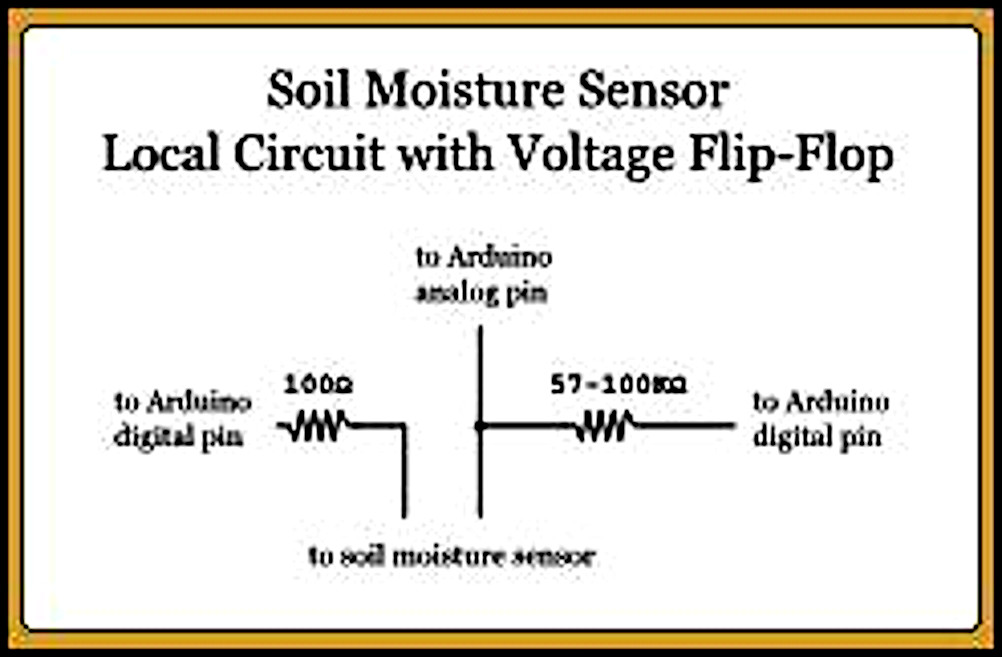Main menu
You are here
Soil Moisture Monitor Methods
[last updated: 2022-04-24]
go to: Deep Soil Moisture Monitor project
go to: Houseplant Moisture Monitor project
-----
-
Two different techniques for measuring soil moisture:
- Resistive:
- Moist soil has lower electrical resistance than dry soil. It's an inverse relationship - the dryer the soil (less moisture), the higher the resistance.
- The Resistive method simply puts two probes into the soil, runs a tiny current between them, ie. through the conductivity of the soil, and measures the voltage drop between the probes, ie. through the soil.
- However you must be careful how you configure your hardware and software in order to get stable readings.
- Commonly accepted explanation is that putting even a milliamp current through soil will create electrolysis, a chemical reaction between the probe metal and the soil, that corrodes the probes and changes the measured resistance.
My tests and observations (soil moisture investigations) don't fully support that hypothesis, but testing is "noisy" and not very repeatable, so who knows. - (link to:) GardenBot.org has a Great writeup on one method for measuring soil resistance.
-
- The gardonbot.org article describes a 'voltage flip-flop' procedure that counteracts/averages-out the error produced by the electrolysis.
Briefly, the first probe is driven high, and the second low. A reading is taken, then probe polarity is reversed, with the first probe being driven low, and the second high. Then a second reading is taken, and the two readings are averaged.
-
- Resistive measurement is used in the Deep Soil Moisture Monitor project and the Houseplant Moisture Monitor project
-------------------------------------- - Capacitive:
- Refs/Links:
- ref-01: https://www.instructables.com/Automatic-Watering-System-With-Capacitive-...
- https://www.instructables.com/Capacitive-Soil-Moisture-Measuring/
- https://thecavepearlproject.org/2020/10/27/hacking-a-capacitive-soil-moi...
- http://www.savel.org/2020/07/09/capacitive-soil-moisture-sensor-designed...
- https://electronics.stackexchange.com/questions/522956/capacitive-moistu...
- https://www.electrobob.com/the-basil-speaks-to-me/
- https://www.instructables.com/Capacative-Soil-Moisture-Sensor-self-made/
- https://laptrinhx.com/hacking-a-capacitive-soil-moisture-sensor-for-freq...
- Resistive and Capacitive.
--------------------------------------------------------
.
.
.
eof
